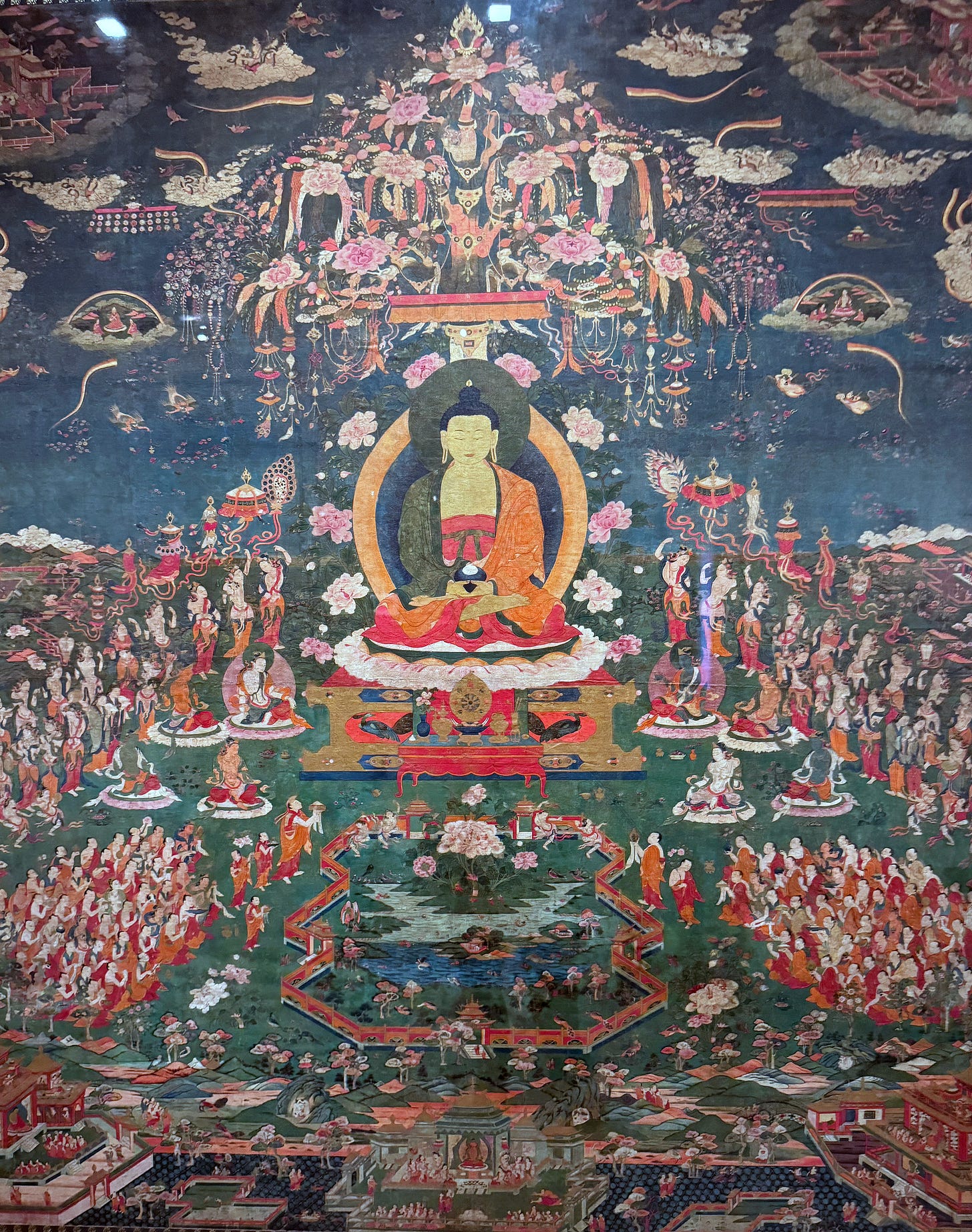Amitabha Buddha in Sukhavati Paradise. Tibet; ca. 1700, Pigments and gold on cotton. San Antonio Museum of Art. This large intricate painting is an exceptional example of special Tibetan Buddhist images that visualize realms where there is no suffering. Such Pure Realm depictions contain pleasant vistas full of flowers, streams, and beautiful palaces.
—From the Rubin Museum show Death is Not the End.
Yesterday I was reminded by various circumstances of something that my teacher Betty Brown once said to me.
That sentence provokes interesting associations. I suppose people probably have a wish for a teacher with a fancy name like Sri Whatevernanda. I’m a pretty ordinary guy, and I ended up with a teacher named Betty Brown.
It sounds more like someone who wrote a cookbook, not a spiritual teacher. Yet it is at the same time, incredibly appropriate, because it’s always the ordinary that teaches us the most—
if we pay attention to it.
It’s the ordinary, not the extraordinary, that we live within — a place of good order created by law. Things that are extraordinary somehow defy law; and obedience is what we need to learn, not how to be extraordinary. To be extraordinary is a thing of the ego; to have a personal wish to stand above or outside of everything, and look down on it. This poisonous territory isn’t just the purview of snotty spiritual aspirants; it is where conspiracy theories also begin.
So the celebration of the ordinary is in order.
Anyway, Betty told me that it’s the duty of an individual working in a group to raise the level.
Keep reading with a 7-day free trial
Subscribe to Zen, Yoga, Gurdjieff: Lee's Gurdjieff Newsletter to keep reading this post and get 7 days of free access to the full post archives.





